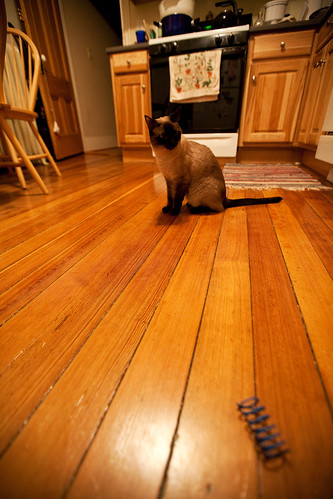When one is getting more and more into photography, learning about different techniques and equipment, they may start to think – or get the impression from reading various books and blogs – that there is the “right way” or the right piece of equipment to use to achieve the best images. For example there are dozens of flash modifiers and diffusers available, and you might start to think that one of them works the best, one of them is the one that the pros use, if you could only find the right information and figure out which one it is. But the truth is, when it comes to photography, there is sometimes no one right way to do something. You just have to look at all the options, experiment, analyze how you work and your resulting images, and then figure out what is going to work best for you.

I recently got sucked into a discussion on a forum about whether or not to use a UV protective filter on your lenses. I contend that it is always a good idea to use one. But that is because I feel it is a wise thing to do for the way I work and photograph. It may not be necessary for others who work differently. I work out in the field traveling, or out-and-about in a city. I take off my lens cap when I start working for the day and put it aside until the end of the day. My camera is slung over my shoulder and is exposed to being banged around, touched by kid’s fingers, and to dust and mystery spots that need to be quickly cleaned off. I don’t mind quickly wiping some dust off the front of my filter with my shirt, a blast of air with the Rocket Blower, or a quick brush and clean with the LensPen, but I would not want to do that so quickly and often with the actual lens and risk scratching it. I feel that replacing a $100 filter is a better idea than risking a several hundred dollar repair with 4 weeks down time on a lens.
Other people walk around, carefully carrying their camera in a case between shots, or replacing the lens cap after each shot or between situations. Or perhaps they take out their camera, put it on a tripod, and take landscape shots. They may not need a protective filter in those uses, and may not wish to risk any minor degradation in image quality. (If you get a coated or multi-coated UV filter like a B+W brand one, your loss of image quality will be less-than-negligible. If you use a cheaper Tiffen filter, you risk having some issues.) If the risk of damage to their lens is small, then it works for them not to use a filter. However, I was in a camera store yesterday, and a woman was replacing her UV filter because her camera dropped and the filter was shattered. The filter’s ring was dented, but there was no damage to the lens at all. She did not intend to drop her camera – that was not part of the way she worked – but it happened. A few dollars for a new filter saved her hundreds of dollars in repairs and the loss of her lens over the holidays.
Before you invest in various accessories that sound like they might improve your images or assist you in how you work, put some thought into it first. If they are a hassle to use or don’t fit into your process, you may end up putting them aside and never really using them. Analyze your needs first and then find a product that matches them. You may read about someone touting a white balance device that seems like it almost magically improves all their photos. You want better photos, so why not give it a try? But have you really come across the need for it? Are you prepared to custom set your white balance every time you enter a new lighting situation? Or do you typically work outside in daylight or inside in standard incandescent light and really don’t need to set a custom white balance at all?
So, all that being said, there are several accessories I find helpful, or even essential – at least for the way I work! I talk about them in this previous post, Equipment for Travel (and Everyday) Photography.

